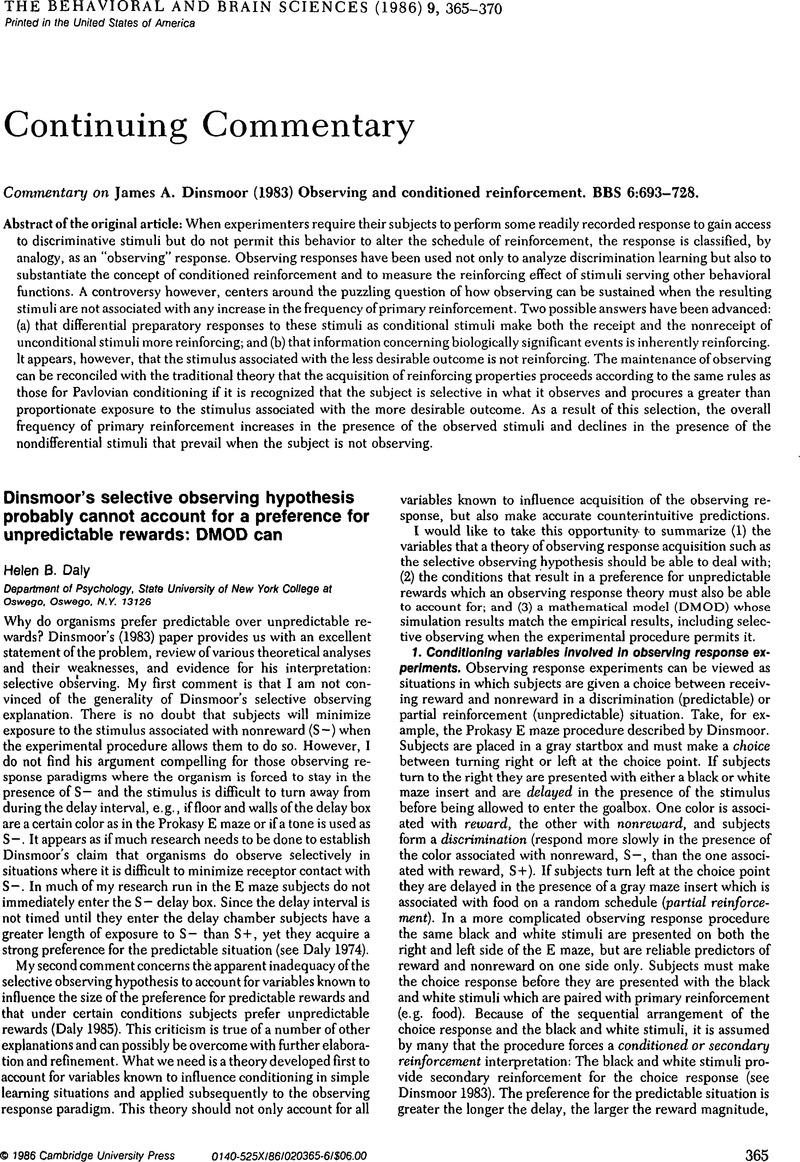Crossref Citations
This article has been cited by the following publications. This list is generated based on data provided by Crossref.
Daly, Helen B.
and
Daly, John T.
1987.
A computer simulation/mathematical model of learning: Extension of DMOD from appetitive to aversive situations.
Behavior Research Methods, Instruments, & Computers,
Vol. 19,
Issue. 2,
p.
108.
Dinsmoor, James A.
Bowe, Craig A.
Green, Leonard
and
Hanson, John
1988.
INFORMATION ON RESPONSE REQUIREMENTS COMPARED WITH INFORMATION ON FOOD DENSITY AS A REIN FORCER OF OBSERVING IN PIGEONS.
Journal of the Experimental Analysis of Behavior,
Vol. 49,
Issue. 2,
p.
229.


